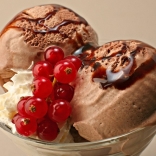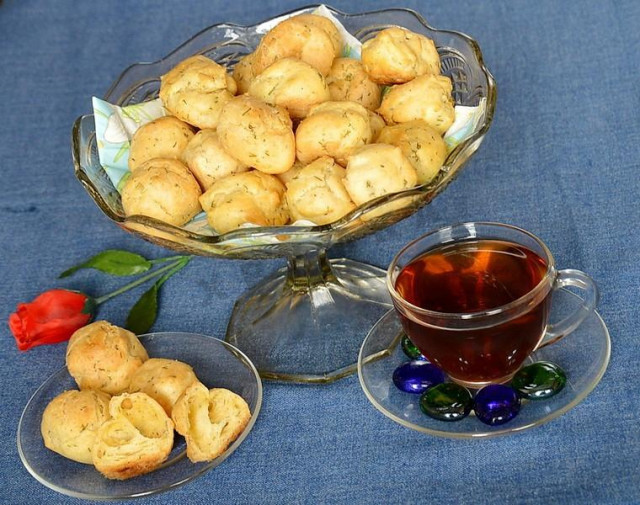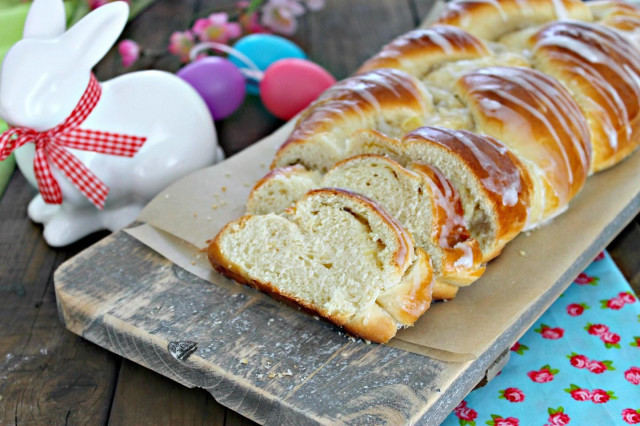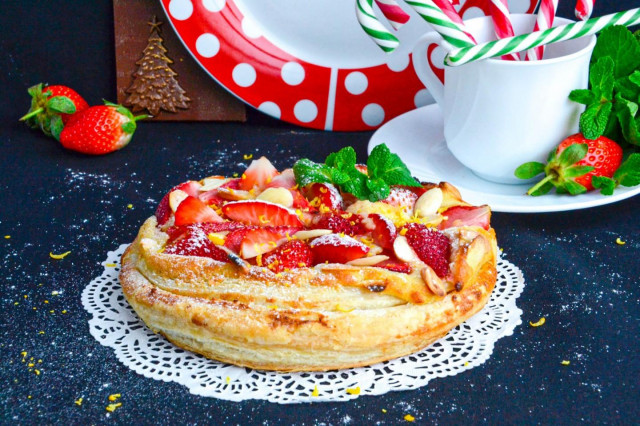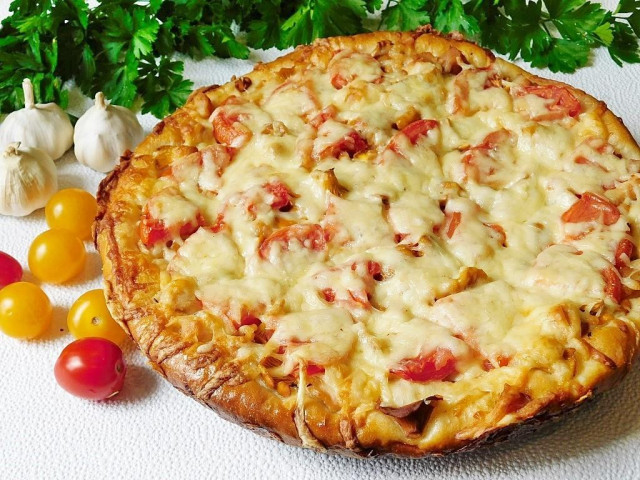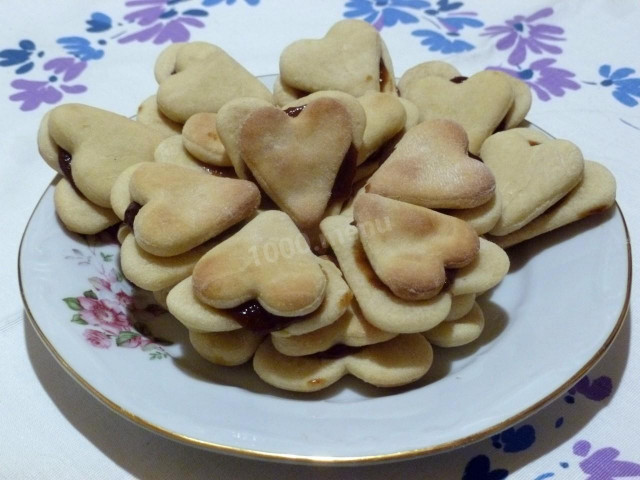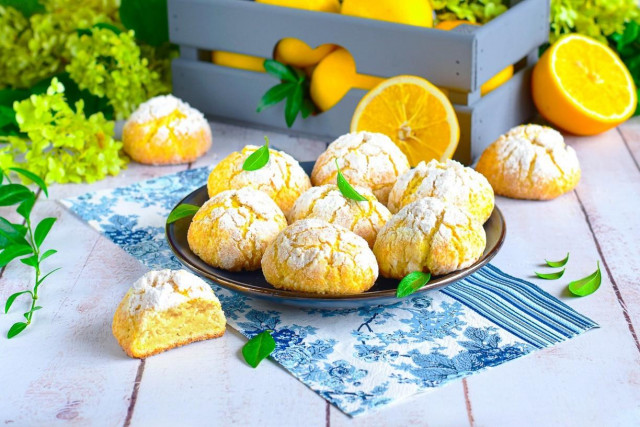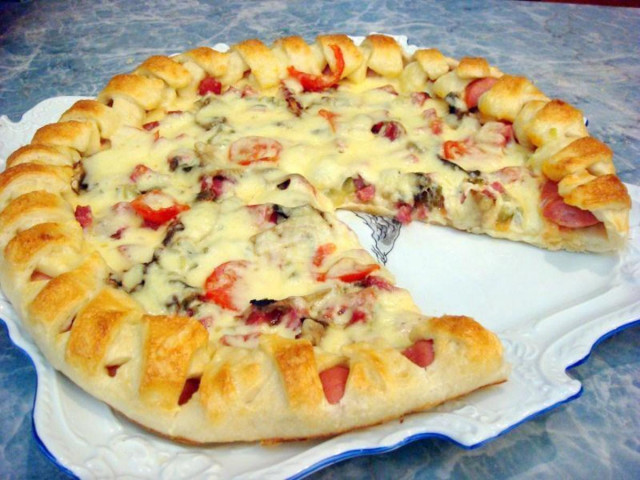Composition / ingredients
Step-by-step cooking
Step 1:
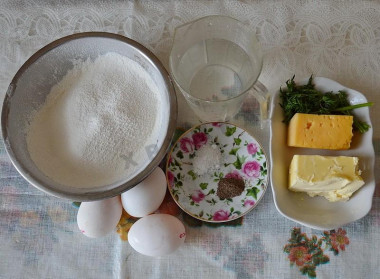
Recipe preparation products. The flour must be sifted.
Step 2:
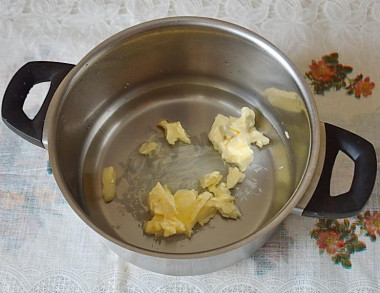
Pour water into dishes with thick walls: preferably in a stainless steel pan or in a cauldron. In the same place, cut the butter into pieces, salt and heat over medium heat until the butter melts and the mixture begins to boil.
Step 3:
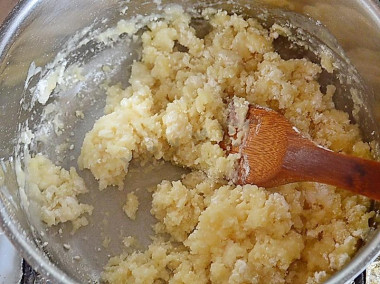
At this moment, pour all the flour into the pan at once. Quickly, thoroughly mix and turn off. The recipe (which I found on the Internet) says that you need to boil the mixture until it thickens over low heat. For me, this mixture instantly thickened. Leave to cool to a warm state.
Step 4:
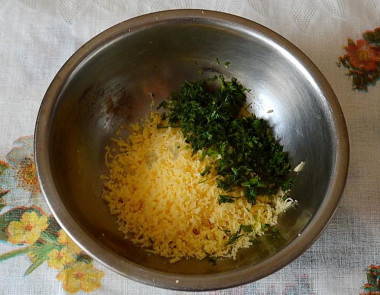
Meanwhile, chop the greens, grate three hard cheese.
Step 5:
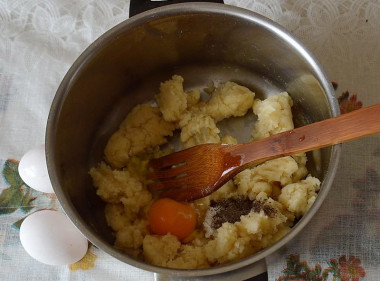
Then add the eggs to the dough one by one, mixing thoroughly after each. First, the dough is taken in pieces, and then, with careful mixing, it becomes homogeneous.
Step 6:
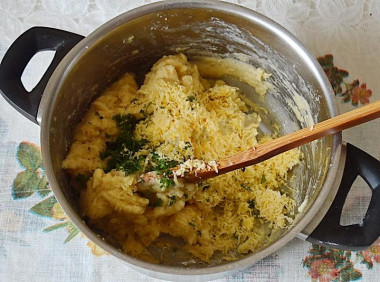
Mix cheese and herbs into the dough. Once again, mix well until a homogeneous consistency.
Step 7:
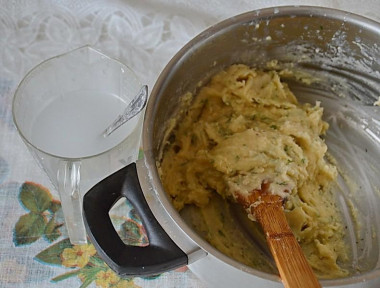
With a tablespoon soaked in water (I took a teaspoon, so the buns turned out to be small), we separate pieces of dough the size of a large apricot.
Step 8:
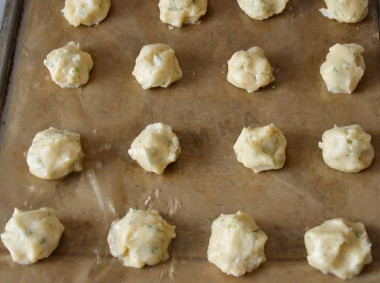
We spread the dough lumps on a baking sheet covered with baking parchment, at some distance from each other, since the buns will increase in size by 1.5-2 times during baking. Lubricate the paper with a thin layer of vegetable oil. We put the baking sheet in the oven, preheated to 200 degrees, bake for about 30 minutes until a ruddy, bright golden color. DO NOT OPEN THE OVEN for 20 -25 min., otherwise the custard dough will not turn out to be airy, it does not rise!
Step 9:
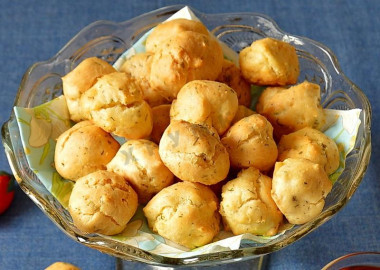
The buns should come up and become dry. If they are sagging, increase the fire a little and hold it for more. If they keep their shape and have become an appetizing color, they are ready. Carefully remove the custard buns on a platter, let them cool slightly. Enjoy your meal! Such buns can be taken on the road, on a picnic, to work, to school...
Step 10:
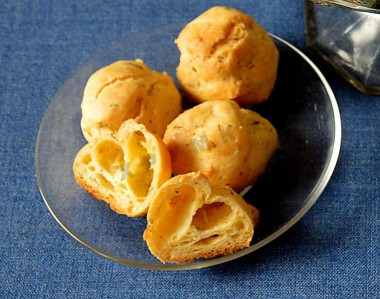
This is how the buns look in the section.
Caloric content of the products possible in the composition of the dish
- Dutch cheese - 352 kcal/100g
- Swiss cheese - 335 kcal/100g
- Russian cheese - 366 kcal/100g
- Kostroma cheese - 345 kcal/100g
- Yaroslavsky cheese - 361 kcal/100g
- Altai cheese 50% fat content - 356 kcal/100g
- Soviet cheese - 400 kcal/100g
- Cheese "steppe" - 362 kcal/100g
- Uglich cheese - 347 kcal/100g
- Poshekhonsky cheese - 350 kcal/100g
- Lambert cheese - 377 kcal/100g
- Appnzeller cheese with 50% fat content - 400 kcal/100g
- Chester cheese with 50% fat content - 363 kcal/100g
- Edamer cheese with 40% fat content - 340 kcal/100g
- Cheese with mushrooms of 50% fat content - 395 kcal/100g
- Emmental cheese with 45% fat content - 420 kcal/100g
- Gouda cheese with 45% fat content - 356 kcal/100g
- Aiadeus cheese - 364 kcal/100g
- Dom blanc cheese (semi-hard) - 360 kcal/100g
- Lo spalmino cheese - 61 kcal/100g
- Cheese "etorki" (sheep, hard) - 401 kcal/100g
- White cheese - 100 kcal/100g
- Fat yellow cheese - 260 kcal/100g
- Altai cheese - 355 kcal/100g
- Kaunas cheese - 355 kcal/100g
- Latvian cheese - 316 kcal/100g
- Limburger cheese - 327 kcal/100g
- Lithuanian cheese - 250 kcal/100g
- Lake cheese - 350 kcal/100g
- Gruyere cheese - 396 kcal/100g
- Ground black pepper - 255 kcal/100g
- Whole durum wheat flour fortified - 333 kcal/100g
- Whole durum wheat flour, universal - 364 kcal/100g
- Flour krupchatka - 348 kcal/100g
- Flour - 325 kcal/100g
- Butter 82% - 734 kcal/100g
- Amateur unsalted butter - 709 kcal/100g
- Unsalted peasant butter - 661 kcal/100g
- Peasant salted butter - 652 kcal/100g
- Melted butter - 869 kcal/100g
- Salt - 0 kcal/100g
- Water - 0 kcal/100g
- Fresh frozen soup greens in a package - 41 kcal/100g
- Greenery - 41 kcal/100g
- Chicken egg - 80 kcal/100g
